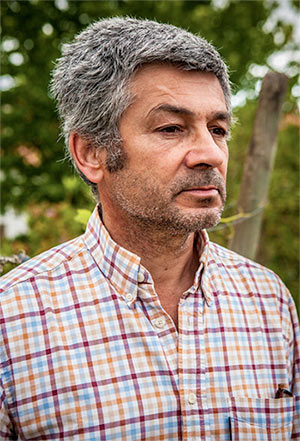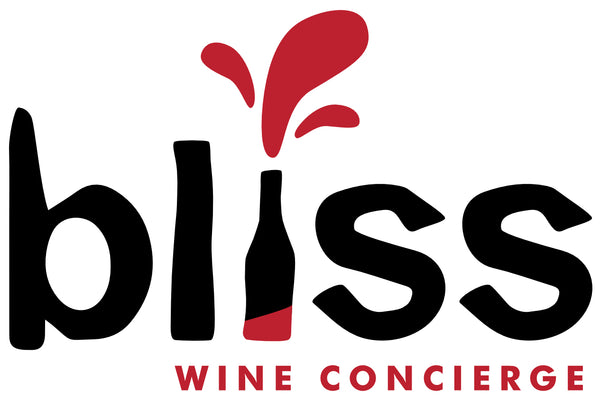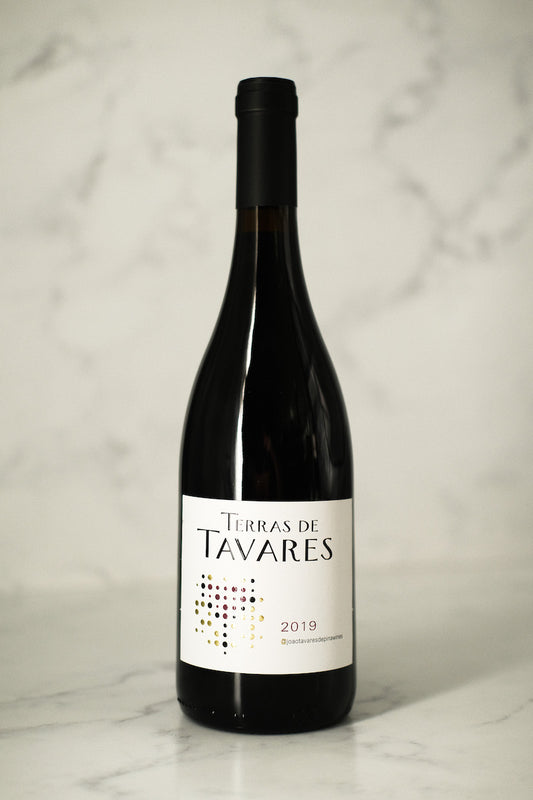
Winemaker: João Tavares de Piña
Collapsible content
Winery Stats
Winery Story
Philosophy
Something Random
-
João Tavares- Rufia Branco 2021
Vendor:Bliss Wine ConciergeRegular price $25.00 USDRegular priceUnit price per -
João Tavares- Torre de Tavares Cerceal Bical 2021
Vendor:Bliss Wine ConciergeRegular price $35.00 USDRegular priceUnit price per -
João Tavares- Torre de Tavares Encruzado 2021
Vendor:Bliss Wine ConciergeRegular price $35.00 USDRegular priceUnit price per -
João Tavares- Rufia Orange (Vinho Branco Curtamente) 2021
Vendor:Bliss Wine ConciergeRegular price $25.00 USDRegular priceUnit price per -
João Tavares- Rufia Orange (Vinho Branco Curtamente) 2023
Vendor:Bliss Wine ConciergeRegular price $30.00 USDRegular priceUnit price per -
João Tavares- Rufia Rosé 2021
Vendor:Bliss Wine ConciergeRegular price $25.00 USDRegular priceUnit price per -
João Tavares- Tretas 2021
Vendor:Bliss Wine ConciergeRegular price $20.00 USDRegular priceUnit price per -
João Tavares- Rufia Tinto 2017
Vendor:Bliss Wine ConciergeRegular price $20.00 USDRegular priceUnit price per -
João Tavares- Rufia Tinto 2016
Vendor:Bliss Wine ConciergeRegular price $20.00 USDRegular priceUnit price per -
João Tavares- Torre de Tavares Mencia 2019
Vendor:Bliss Wine ConciergeRegular price $35.00 USDRegular priceUnit price per -
João Tavares- Terras de Tavares 2019
Vendor:Bliss Wine ConciergeRegular price $40.00 USDRegular priceUnit price per -
Quinta da Boavista- Terras de Tavares Reserva 2003
Vendor:Bliss Wine ConciergeRegular price $45.00 USDRegular priceUnit price per -
Quinta da Boavista- Terras de Tavares 2002
Vendor:Bliss Wine ConciergeRegular price $50.00 USDRegular priceUnit price per -
Quinta da Boavista- Terras de Tavares Reserva 1997
Vendor:Bliss Wine ConciergeRegular price $110.00 USDRegular priceUnit price per -
Quinta da Boavista- Terras de Tavares Reserva 2004
Vendor:Bliss Wine ConciergeRegular price $50.00 USDRegular priceUnit price per
What's in the Box- October 2023
Master Sommelier Andrey Ivanov explores the wines of João Tavares in Dão, Portugal.
Two months ago we were joined by then Advanced Sommelier Jonathan Eichholz, of Guildsomm.com. Since then, Jon has joined the ranks of the red pins becoming one of only two new Master Sommeliers in the Americas chapter. When recorded, this was still not the case but you can tell that he was well on his way. This is one of my favorite episodes of What's In the Box we have recorded to date and I hope you enjoy the banter and information! Cheers!
Wines Tasted:
- 2021 Torre de Tavares Encruzado
- 2019 Torre de Tavares Mencia
- 2002 Terras de Tavares
- 2003 Terras de Tavares Reserva
Down with the Dão: Standing by Your Convictions to Stay True to Tradition
by Andrey Ivanov, MS
João Tavares de Pina grew up a ruffian in Oporto while his family held down the family estate in the heart of Portugal's interior. The property has been in the family all the way back to 1650! In his youth, he was drawn to wine but didn't see it as his passion until the early 1990s. Before then he was much more drawn to the culinary side of hospitality. He is in many ways a renaissance man. João is a great chef, but also a skilled carpenter, smith, and caretaker of the earth. His first official vintage making wines for the family estate was 1997, a vintage that he still considers the best of his career.
A bit of backstory on the Dão... While most of us know Portugal for the eponymous fortified Porto wines popularized by commerce with Britain and the rest of Northern Europe, those wines were mostly exported. The Portuguese themselves also did not always share their northern customers' thirst for sweet wines. The still, dry wines that were sought after by the Portuguese nobility came from the interior of the country, south of the unforgiving landscape of the Douro Valley. It is here, surrounded by mountains on three sides, one finds the region of Beiras. The crown jewels of the region are the appellations of Bairrada and Dão. The weather is influenced by the cool Atlantic Ocean much more than the continental climates further inland. The Sierra de Estrella mountains to the east and the Montemuro mountains to the north block the heat from the Iberian interior. A coastal range protects it from the heaviest precipitation, but a cool flow of air funnels moisture in from the south giving this area a unique climate for Portugal.
The Dão also has the highest concentration of old granitic soils in the country. This tough, dense material is normally a challenge for grapes, but the age and decomposed nature of it here provides a distinct rocky tone to the wines. Penalvo do Castelo sits at the highest point of the granite vein at the northern end of the Dão region. It was here that João's ancestors built the Quinta da Boavista back in the 17th century. The property served as an inn, farm, and center of commerce. It sits at 500m above sea level, with some of the highest vineyards going to 550m in some seriously old and fractured rocky soils. When you walk around you see the decomposing components of granite everywhere in the form of quartz, mica and feldspar.
The wines differ from those produced in the fertile plain of the Dão River on the valley floor. Herein lies the beginning of our story of João vs. the Dão DOP. The regulatory agency of the appellation is responsible for the wine law of the region and is notoriously byzantine in its labeling. No less than 36 different classifications exist for wines and each is regulated through a tax structure that would make the US tax code seem like a John Grisham paperback. The region was first demarcated by the famous aristocrat oenologist João de Sacadura Botte Côrte-Real and was given appellation status in 1908! It was truly seen as a great enclave for wine production during the beginning of the 20th Century. In 1940 the region was forced into a mandatory co-operative production model with the hopes that the high quality of the region would be upheld through all of its wines. But as we know, best laid plans rarely work out... The wines became quite poor in quality, even being considered unhygienic compared to other regions. Crazy to think, but the Dão DOP required all wines by law to be made at a co-op until Portugal applied to join the EU in 1979!
As you can imagine, João did not want to make co-op wines. He looked back through historical records to see what styles of wine and what grapes were historically grown in the region. He started to cultivate as many of these as possible in a nursery on the property. Today over 50 varieties are propagated there, with some only surviving on site! For you nerds, a list is below:
Red varieties - Camarate, Castelão, Cidreiro, Coração de Galo, Cornifesto, Marufo, Monvedro, Malvasia Preta, Pilongo, Tinta Carvalha, Tinto Cão, Touriga Fêmea , Trincadeira
Whites varieties - Alicante Branco, Arinto do Douro, Assaraky, Arinto Gordo, Branda, Douradinha, Fernão pires, Moscatel galego, Malvasia Rei, Rabo de Ovelha, Tamarez, Terrantez.
João is a passionate and opinionated guy who makes unbelievable wine. He believes that to be truly organic means to do as little as possible in the vineyard and winery. If you visit the vineyards you will see João’s commitment to nature everywhere. Wildflowers act as natural protectants to the vines because of the antiseptic properties of the pollen. João’s favorite wildflowers are two kinds of chamomile that grow rampant throughout his vineyards.
He believes that the most important component of his winemaking is the fact that he lives in the middle of his vines. Natural yields, manual harvest and co-planting many varieties are three of his tenets in the vineyard. In the cellar, he is a strict non-interventionist; native yeasts for spontaneous co-fermentations, low sulphur and no more chemicals in cellar, no new wood, no fining, filtering, not even temperature control on his reds. He ages his wines in chestnut, 1300/1800L barrels, until he feels they are perfectly ready for release, a luxury not enjoyed by many corners of the wine world.
His non-use of oak spurred another fight with the appellation as he submitted and was awarded Reserva status for his flagship Terras de Tavares in 2003, but not in 2004. It was rejected in '04 for "not having enough oak influence." When João told the authorities not only does he not use new oak, he doesn't use any new wood at all, he was told he was mistaken. Suffice it to say that was the last year he ever applied for Reserva status. In 2018 he made the decision to switch all of his wines to Vinho do Portugal, the lowest level of classification, even for the flagship wines. To João it is the wine that matters, not the label or regulatory body behind it! Watch the video for more colorful anecdotes!
He and his wife Luisa still live on property, being empty nesters now that their three daughters are out of college. The vineyard is not tilled, so as to not disturb the biodiversity underneath, and utilizes native flowers and herbs as natural repellents to fungus, mold, and other diseases. The cover crop includes, but is not limited to, chamomile, clover, and serradella. At the end of each row are indigenous lavender signaling any oncoming disease. The vineyards themselves are surrounded by oak, pine, and eucalyptus. Lots of species of birds, bees, ladybirds, ants, and earthworms populate the ecosystem of the vineyard. The winery is also covered in photovoltaic cells; making the Quinta self-sufficient for energy as well as being a net exporter of electricity. Overall, the winery is carbon neutral. With a nod to the past, João Tavares looks to the future. The future is bright!
-

Andrey and João in 2018 tasting the 2002 Terras de Tavares.
-

João walking his own path on the property.
















